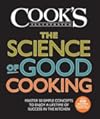
Guy Crosby
Author of The Science of Good Cooking
Works by Guy Crosby
Tagged
Common Knowledge
- Gender
- male
- Country (for map)
- USA
- Places of residence
- Weston, Massachusetts, USA
- Education
- University of New Hampshire (BS|Chemistry)
Brown University (PhD|Organic Chemistry) - Occupations
- professor
director of research and development
science editor
vice-president of of research and development - Organizations
- American Chemical Society
Institute of Food Technologists
American Society for Nutrition
Members
Reviews
You May Also Like
Associated Authors
Statistics
- Works
- 5
- Members
- 709
- Popularity
- #35,752
- Rating
- 4.3
- Reviews
- 7
- ISBNs
- 8
- Languages
- 1

